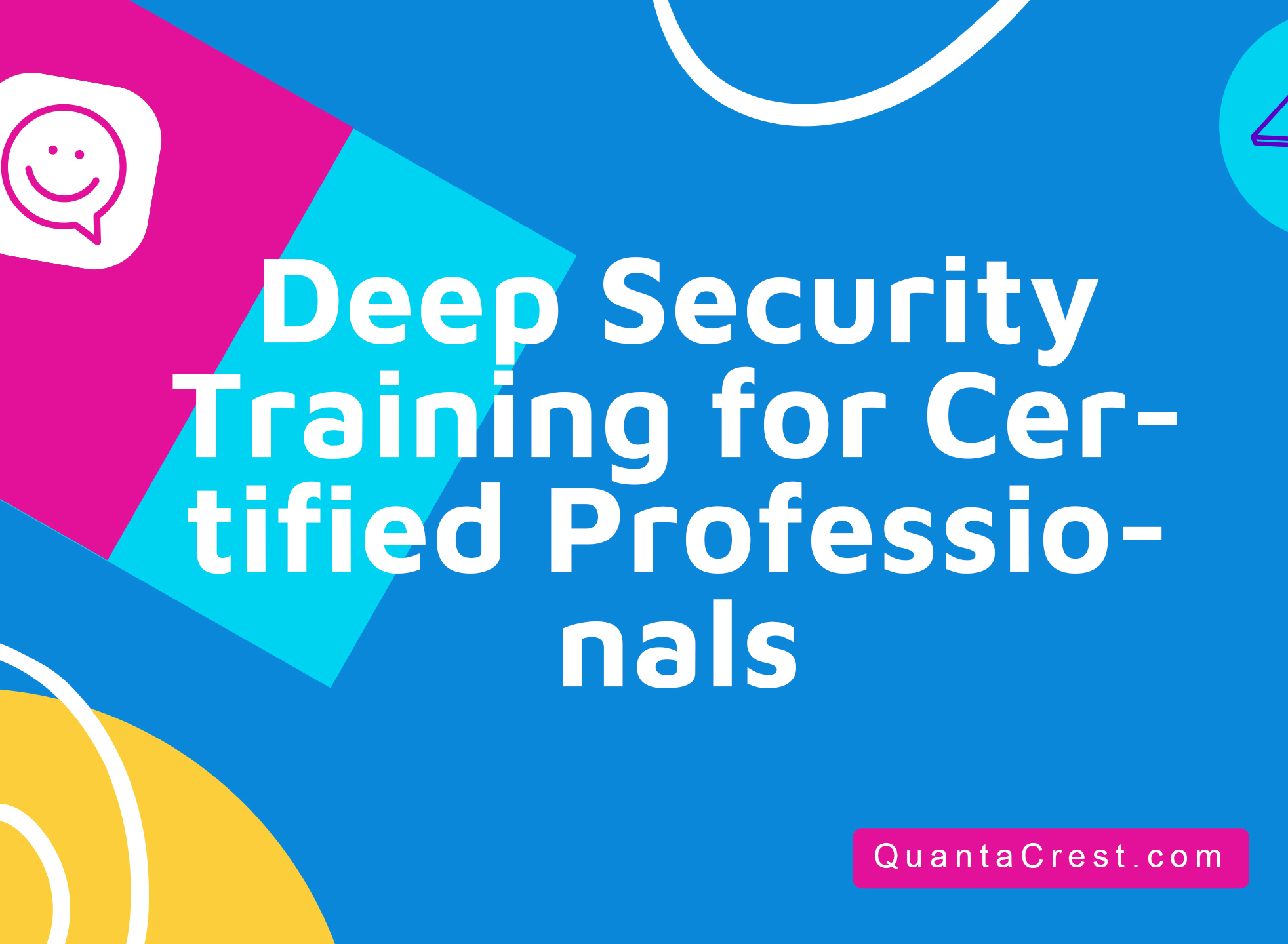Deep Security Training for Certified Professionals
in Trend MicroAbout this course
Course Overview
Trend Micro™ Deep Security™ 12 Training for Certified Professionals is a three-day, instructor-led training course. Participants will learn how to use Trend Micro Deep Security for advanced hybrid-cloud security on physical, virtual, and cloud-based servers.
This course details the basic architecture of the Deep Security solution, deployment options, protection modules, policy configuration, and administration of the system. As part of the course, participants will deploy Deep Security Agents on a variety of Windows Server platforms, as well as the Deep Security Virtual Appliance. Best practices and troubleshooting details for successful implementation and long-term maintenance of the system are discussed.
This course incorporates a variety of hands-on lab exercises, allowing participants to put the lesson content into action.
This course is taught by Trend Micro certified trainers. Upon completion of this course,
participants may complete the certification examination to obtain designation as a Trend
Micro Certified Professional for Deep Security.
Target Audience
This course is designed for IT professionals who are responsible for protecting users, networks, data centers, and cloud resources from data breaches and targeted attacks.
This includes those responsible for:
Operations
Deployment
Security Response
Compliance
Support
Course Objectives
After completing this training course, participants will be able to:
Describe the purpose, features, functions, and capabilities of Trend Micro Deep Security 12
Define and install components that make up Deep Security
Implement security by enabling protection modules
Describe available configuration and administration options
Attempt the Trend Micro Certified
Professional for Deep Security
Certification Exam
Course Content
Product Overview :
Introduction to Deep Security
Deep Security protection modules
Deep Security deployment options
Deep Security components
Trend Micro™ Deep Security™ Manager :
Server, operating system, and database requirements
Deep Security Manager architecture
Installing and upgrading Deep Security Manager
Deep Security Agents :
Deep Security Agent architecture
Deploying Deep Security Agents
Viewing computer protection status
Upgrading Deep Security Agents
Organizing computers using groups and
Smart Folders
Keeping Deep Security Up to Date :
Security updates
Software updates
Deep Security relays
Trend Micro™ Smart Protection™ :
Smart Protection services used by
Deep Security
Configuring the Smart Protection source
Policies :
Policy inheritance and overrides
Creating new policies
Protecting Servers from Malware :
Anti-malware scanning techniques
Enabling anti-malware protection
Smart Scan
Blocking Malicious Websites :
Enabling web reputation
Setting the security level
Filtering Traffic Using the Firewall :
Enabling the Deep Security firewall
Firewall rules
Traffic analysis
Traffic order of analysis
Port scan
Protecting Servers from Vulnerabilities :
Virtual patching
Protocol hygiene
Protocol control
Web application protection
Enabling intrusion prevention
Running recommendation scans
Intrusion prevention rules
Security Sockets Layer (SSL) filtering
Protecting web applications
Detecting Changes to Protected Servers :
Enabling integrity monitoring
Running recommendation scans
Detection changes to baseline objects
Blocking Unapproved Software :
Enforcement modes
Enabling application control
Detecting software changes
Creating an inventory of approved software
Pre-approving software changes
Inspecting Logs on Protected Servers :
Enabling log inspection
Running recommendation scans
Events and Alerts :
Event forwarding
Alerts
Event tagging
Reporting
Protecting Containers :
Continuous integration/continuous deployment
Software development using containers
Protecting containers with Deep Security
Automating Deep Security Operations :
Scheduled tasks
Event-based tasks
Quick start templates
Baking the Deep Security Agent into an
Amazon® machine image
Application programming interface
Activating and Managing Multiple Tenants :
Segmentation using multi-tenancy
Enabling multi-tenancy
Creating and managing tenants
Activating Deep Security Agents on tenants
Usage monitoring
Detecting Emerging Malware Through :
Connected Threat Defense
Connected Threat Defense phases
Trend Micro™ Deep Discovery™ Analyzer
Trend Micro Apex Central™
Configuring Deep Security for Connected
Threat Defense
Tracking submission
Protecting Virtual Machines Using the Deep Security Virtual Appliance :
Deep Security Virtual Appliance
Virtual Appliance deployment models
Virtual appliance deployment and activation
Course Prerequisites
There are no prerequisites to attend this course, however, a working knowledge of Trend
Micro products and services, as well as an understanding of basic networking concepts andprinciples will be helpful.
Basic knowledge of the following topics is also beneficial:
Windows servers and clients
Firewalls and packet inspection devices
VMware® ESXi/vCenter/NSX
Amazon AWS/Microsoft® Azure™/VMware vCloud
Virtualization technologies
Participants are required to bring a laptop computer with a recommended screen resolution of at least 1980 x 1080 or above and a display size of 15” or above.
Comments (0)






